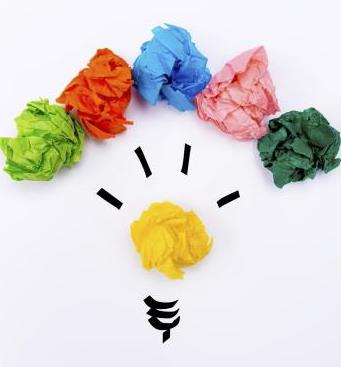Collaborative Sales Learning: Not a Contradiction
- Modern sellers are far more amenable to learning and sharing via peers
- Collaboration platforms, video solutions and gamification can be effectively deployed to support long-term learning goals
- Rich media solutions are well-suited to nano-learning and real-time, self-paced sales rep education
In the not-too-distant past, B2B sales professionals were not considered the most likely individuals to participate in teamwork or to engage in virtually any collaborative behavior. The inherent nature of the dog-eat-dog, quota-oriented job, the typical competitive persona drawn to it and the highly leveraged compensation structure usually supporting it all add up to the classic 20th-century stereotype: trusting no one, guarding one’s territory aggressively and never sticking one’s neck out to help a colleague who could be considered a competitor.
 It’s little wonder that Glengarry Glen Ross and other caricatures of salespeople are so engrained in popular and business culture. All the current talk about the buyer’s journey is informed by claims that consumers want to delay, at all costs, interacting with an actual, human salesperson.
It’s little wonder that Glengarry Glen Ross and other caricatures of salespeople are so engrained in popular and business culture. All the current talk about the buyer’s journey is informed by claims that consumers want to delay, at all costs, interacting with an actual, human salesperson.
Modern sellers, particularly those classified as Millennials, are changing this work style dramatically. They’ve come of age in a time when gaining knowledge has morphed from “whatever the boss says” to a global network of peers and strangers whose user-generated content has democratized information access for anyone with a broadband connection and an interest in self-improvement. This trend does not imply a lesser sense of competitiveness among younger, wired sellers – merely a foundational change in which they more effectively leverage tribal knowledge to gain access to the President’s Club ahead of those same peers from whom they extract best practices.
Once we recognize that knowledge acquisition has ceased to represent a purely downstream process within the sales organization, we gain, as enablement leaders, the opportunity to leverage collaborative learning to yield win-win-win results for sellers, buyers and our companies at the same time. In the spirit of “there’s an app for that,” here are some technology families you can use to enhance the benefits for all these stakeholders:
- Enterprise social collaboration (ESC). Many sales enablement organizations benchmarked by SiriusDecisions deploy either a standalone solution or one integrated with their sales force automation (SFA) platform to foster communications, ideation, teamwork and community-building within their companies. Utilizing platforms such as Chatter, Jive or Yammer allows institutions to flatten out bureaucracy, cut through red tape and politics and allow the sellers’ “hive” to stand up and adopt the best ideas and practices within any defined group of team members and near the most frequented watering holes. Just as consumers have learned to place more trust in buyer reviews than in corporate marketing messaging, Millennial sellers are likely to consider peer input as valuable as what they’ve learned from managers and in-house trainers. Collaboration initiatives can also be strongly legitimized by organizational leaders willing to let employees self-identify their social groups, as long as it is maturely executed, such as a new-hire class of sales reps. This resolves the inevitable onboarding questions of where to find information and understand policy, and builds a sense of community and healthy competition among quota-carriers. Still, many ESC initiatives fail to build sustained support, so garnering early executive sponsorship and tracking business-centric KPIs are crucial for long-term success. Be sure to encourage collaboration around sales deals and opportunity management rather than happy hours or fantasy sports leagues.
- Video learning and coaching. Another attribute associated with the younger generation of sellers is rooted in their deep experience with rich media offerings, thanks to YouTube and virtually every social media platform available. Video is far more engaging to multiple senses and helps individuals (especially visual learners) absorb content more holistically – and it serves as a hedge against attention issues. Commonly used solutions such as Allego, Brainshark and CommercialTribe are often deployed by sales enablement to allow manager-rep and peer-to-peer interactions that review and refine everything from sales pitches and negotiation tactics to real-time, pre-meeting call scripting. After all, people buy from people, and video is well-suited to refining the human element of B2B selling. Don’t assume, however, that all first-line sales managers will miraculously produce better results with video – it extends good coaching but can’t fix the bad.
- Gamification. While most sales leaders think about deploying game mechanics and contests to modify short-term behaviors around activities that immediately impact revenue – e.g. selling a hot new product or rescuing a stalled pipeline – there is equal value in using platforms such as Badgeville, Bunchball or Hoopla to support sales rep or channel partner learning. One of the most difficult sales enablement challenges – how to continuously educate reps once initial training is over and they’re laser-focused on hitting quota in their assigned territories – can be addressed by tapping into the competitive nature of sellers that informs the points, badges and leaderboards that gamification initiatives leverage to drive behavioral outcomes. For example, an organization entering a new industry vertical may prefer that enablement certify reps on the new sector in a time-sensitive cadence around the product marketing launch vs. taking quota-carriers out of the field for formal training. With an SFA-embedded mini-competition – points, recognition or cash awarded to the first individuals (or teams) who complete asynchronous nano-learning on the new subject matter – enablement can leverage gamification for collaborative learning results via activity-based sales enablement. Take pains not to over-gamify reps lest they permanently back-burner your good intentions, and avoid over-rewarding pure activities vs. business-oriented results.
Compared to earlier business climates, there is more awareness today of the value of growing and supporting staff throughout the course of their tenure with the employer. Most sales enablement leaders interlock with human resources or corporate training to leverage learning management solutions supporting cultures of enterprise-wide permanent learning. Whether the solutions above are deployed as standalone knowledge acquisition tools or embedded in a larger-scale learning management system, leveraging the most common attributes of modern sellers to make learning natural, enjoyable, social and competitive is a highly effective best practice.
